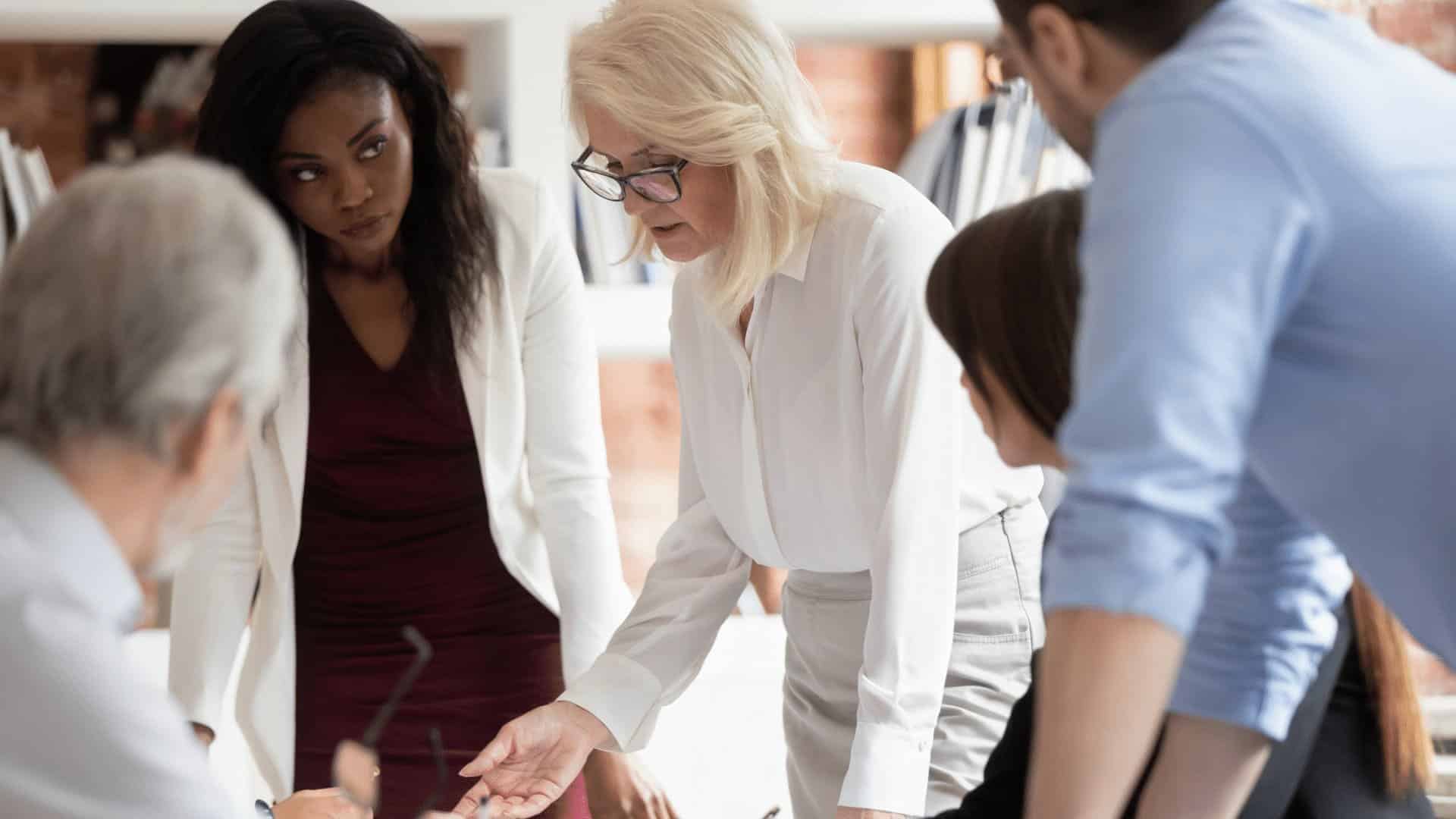This is the third article in a five-part series focused on how to use leadership development to advance DEI initiatives. Read the first installment here and the second here.
According to Global Industry Analysts the DEI market is projected to reach $15.4 billion by 2026, but the traditional approach to fostering diversity, equity, and inclusion has had underwhelming results. While women make up the majority of the college-educated workforce, and nearly half of the overall workforce, only 1 in 4 C-suite positions are filled by women, according to McKinsey and Company’s 2022 Women in the Workplace report. The numbers are even less for women of color — only 1 in 20 executives are WOC.
Why DEI initiatives are failing
The traditional approach to improving DEI within organizations is riddled with design flaws, insincere motivations, and false assumptions. Typical DEI programs focus on a limited subset of the organizational workforce, operate through single workshops, approach leadership development from a deficit mindset, or are executed with an ambivalent view of diversity — it is not considered a business imperative, which impacts how it’s positioned, perceived, and acted on.
Traditional DEI initiatives suffer most from their inability to connect diversity to business outcomes. These standard DEI programs often make the case for diversity, equity, and inclusion from a social justice standpoint. They position DEI as the ‘right thing to do’ from an empathetic perspective, but not necessarily as the right thing to do from a business objective.
DEI as a social and business imperative
Greater leadership diversity leads to greater business impact. For instance, IBM’s 2021 “Women, leadership, and missed opportunities” found that organizations that prioritize the advancement of women report a rate of revenue growth as much as 61% higher than those that do not. Further, 60% report they are more innovative than their competitors, and 73% say they lead their field in customer satisfaction.
IBM is not alone in its assertion that gender-balanced boardrooms drive greater success. According to Research and Markets’ 2022 Diversity and Inclusion (D&I) Global Market Report, diverse companies earn 2.5 times higher cash flow per employee, and inclusive teams are more productive by over 35%. Likewise, research from the International Labor Organization shows that companies with gender-inclusive cultures are nearly 10% more likely to have enhanced business outcomes than those that do not.
Organizations must reframe diversity as a critical business strategy — not as a “nice-to-have” but non-essential benefit. As with any other initiative, leaders must set measurable goals and routinely, transparently, share progress.
Yet, setting expectations is not enough. Leaders — those who have the most power and responsibility to create diverse and inclusive organizational cultures — must be held accountable. In the aforementioned McKinsey and Company report, 80% of human resource leaders say managers are expected to promote diversity and inclusion in their teams, but only 53% of employees say their managers have consistently encouraged respectful and inclusive behavior. Worse, only 34% of companies consider progress on DEI when evaluating manager performance.
Set up leaders for success and accountability in DEI initiatives
Even with clear goals and accountability, leaders will still require resources and support to succeed with DEI initiatives. They need the space to examine their own behaviors and unconscious biases that hinder diversity of thought and limit organizational diversity overall.
Post-examination, leaders must figure out how to change those behaviors. Changing behavior requires a different learning and development model than those found in traditional DEI workshops. Behavioral change likely won’t happen from one or two sessions; it requires continual, situational learning, self-reflection, and experimentation.
Leadership coaching provides a safe space for contextual learning and experimentation — key drivers for behavioral change. Coaches encourage leaders to stretch their capacity to be challenged while developing capabilities that help them to more easily, naturally, and consistently support inclusive cultures. “As a leadership coach, I would begin a session by asking, ‘What have you done differently since the last time we spoke?’” said Sounding Board Co-founder and Chief Coaching Officer Lori Mazan. “It challenges the leader to examine their own behavior and the effectiveness of that behavior.”
When leaders are challenged, they move from their comfort zone to their learning zone. As Columbia researcher Donald Edmondson, PhD said, “Engaging in practices that take you off ‘autopilot’ and help you make informed decisions that are in line with your goals can help with behavior change.” That is exactly what coaching does. It empowers leaders to make positive behavioral changes by removing the ‘autopilot’ setting they usually operate on.
Coaching also mirrors behavioral science principles through contextualized learning. Leaders learn to examine how their identity influences their leadership. “Leadership is the constant,” said Iyad Uakoub, director of behavioral science at Sounding Board. “Identity is the variable.” Through this exercise, leaders are able to confront their own privilege while better empathizing with identities unlike their own.
Using situational learning, coaches enable leaders to connect their behavior to business outcomes. Coaches essentially develop leaders within the context of their organization, defining leadership through the company’s lens. Leaders are pushed to question how their behavior affects the overall organization.
Organizations need to shift away from trying to foster diversity by appealing to employees’ values and morals. Behavioral Scientist, Harvard sociology professor Frank Dobbin said despite the belief that values drive action, “often it goes the other way. If you change [people’s] behavior, you can often change how they think about the world.”
Leadership coaching works to shift behavior and mindsets through behavioral science principles. By developing leaders through coaching, and reframing the case for diversity and inclusion as a business imperative, organizations will be able to finally see results from their DEI initiatives.
Create accountability in your DEI initiatives through leadership development
Acknowledging limiting, inequitable, or systemic issues, behaviors, and mindsets is not enough to fix the broken rung for women. Just as with any other business priority, leaders must be held accountable if they fail to deliver on DEI initiatives, gender-based or otherwise.
To do so organizations must be able to quantify DEI efforts. That means setting clear goals. Collect and regularly share data on diversity metrics including hiring, retention, and promotion rates, discrimination complaints, etc. Goal progression, program engagement and participation, and outcomes must be measured. The aforementioned IBM report identified programs that use “design thinking” and “continual test-and-learn cycles” as those among the most effective to bring about lasting improvements to DEI programs.
Leadership coaching provides the exploratory space for leaders to test and learn theories along their developmental journey. Further, leaders should be consistently encouraged to stretch their capabilities, and develop leadership styles through experimentation. Similarly, development programs that incorporate technology can provide transparency via access to key metrics that can determine business impact.
Companies must leave traditional DEI training behind. Instead, opt for leadership development programs focused on the developing capabilities, behaviors, and mindsets needed to create inclusive, diverse organizational cultures. By focusing on developing their existing leadership bench, expanding access to leadership development to all levels of management, and creating accountability, companies can move from virtue signaling to real action on DEI.
Mary Carder is a content writer for Sounding Board.










